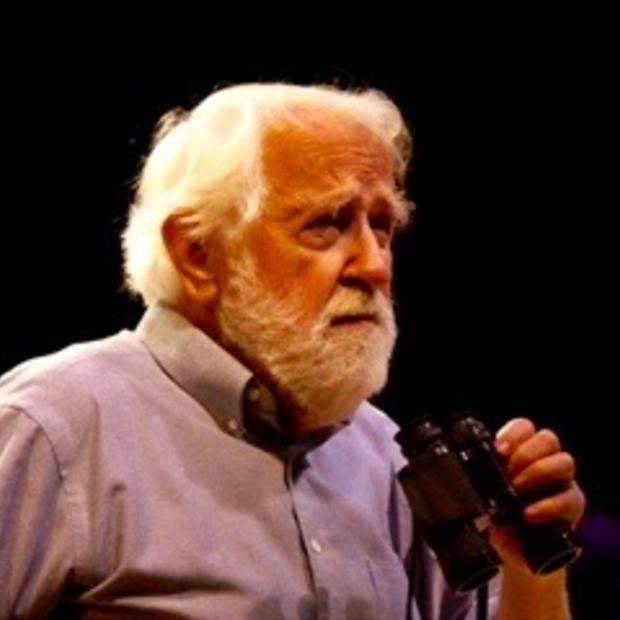Suppose President Barack Obama were to launch a federal program paying artists to make art, photographers to photograph, and writers to write. Imagine the talk radio decibels rocketing, and the mouth foam that would fly on Capitol Hill.
A newly opened show at Bellingham's Whatcom Museum — was put together to celebrate the 75th anniversary of Franklin Roosevelt's audacious Depression-era program that did just that. It features 55 paintings from the Smithsonian American Art Museum, from thousands created under FDR's Public Works of Art Project in 1934, during the worst and longest economic cave-in the United States has ever known.
The exhibition came to Bellingham — the only West Coast stop on a nationwide tour — through a Smithsonian Affiliation arranged by Executive Director Patricia Leach shortly after she took over the Whatcom Museum in 2007.
"It seems like such a fitting theme," Leach says of the Depression paintings. "This art reminds us of what we're going through in today's recession. It shows us that people found reason to hope, in a much worse time than ours."
Titled "1934: A New Deal For Artists," the show presents what the Federal Emergency Relief Administration called simply "The American Scene." That's about the only direction the government gave its hired artists — go out and paint the American scene. In six months they created 15,600 works of art to be hung in public buildings, including the White House.
The paintings cost the public an average of $83 and change. In return the artists produced works that range from despair to exhilaration, from natural beauty to urban grit, from industrial pride to sorrowful resignation.
"The Farm," by Seattle artist Kenjiro Nomura shows a neatly kept place, welcoming and pleasant at first glance. The fences stand straight, the trees show late spring foliage and the sun lights a bright red barn. But the barn windows are pitch black. So are the spaces of the wide-open barn doors. Storm clouds build behind the hills. There are no animals and no people. The place looks antiseptically abandoned.
Seattle history provides clues to Nomura's message. For 25 years, his kin had survived anti-Japanese agitation aimed at forcing them off their farms and out of their businesses. Eight years after the government paid Nomura to paint the American scene, it banished him, his wife and son and 120,000 other Japanese -Americans to internment camps under FDR's Executive Order 9066.
One of the most depressing but compelling works in the collection is Ivan Albright's iconic oil, "The Farmer's Kitchen." An old woman sits in front of a wood-burning cook stove, cleaning radishes. Her grotesquely gnarled hands match the wrinkled, rough sorrow of her face. Even her cat looks frightened and unfriendly. An air of dismal resignation prevails. Like some gnarly facts of American history, the painting is hard to look at, but doesn't let you look away.
"Snow Shovelers" by Jacob Getlar Smith expresses in ways that written language could not, the leveling nature of the Great Depression. Half a dozen men, hired to clear the streets, move along the sidewalk with their shovels. Those dressed in work clothes, everyday boots and winter caps, radiate confidence and resilience as though on friendly terms with hard labor. Others wear what once were dressy hats, long coats and street shoes. You know at a glance they were the desk captains of the prosperous years, and their faces show nothing but weariness, fear, and desperation.
For all the grim reality they captured, the New Deal painters were also taken with the beauty of the countryside and the irrepressible spirit of the towns. A night baseball game in Nyak, N.Y., and a brightly painted downtown Parkville, Missouri, offer light and hope for better times, as does Agnes Tait's "Skating in Central Park."
The 1934 New Deal for Artists became the experimental model for a much longer and more broadly based series of programs that put thousands more painters, sculptors, and muralists to work for longer periods, and put thousands of hungry writers (John Steinbeck, Saul Bellow, Loren Eisely, and Studs Terkel among them) and photographers to work chronicling the desperate times.
But it's the earliest of the government-paid painters that the traveling Smithsonian exhibit honors, and it seems likely that FDR would approve. Although his New Deal programs fed millions, built thousands of miles of highways, thousands of bridges, parks, airports, and schools, the artist programs seem to have brought Roosevelt great satisfaction, particularly as they enraged his critics. His treasury secretary, Henry Morgenthau, quoted the president as saying, "One hundred years from now, my administration will be known for its art, not for its relief."
The exhibit opened Sept. 18 and runs through Jan. 9, 2011, at Whatcom Museum's Lightcatcher Building, 250 Flora Street, Bellingham. The museum is open Tuesdays through Sundays, noon to 5 p.m. Admission fees range from $4.50 to $10. During the exhibition, admission is $5 on Tuesdays. The Museum is also encouraging visitors to bring a can of food for the Bellingham Food Bank to help neighbors in need during these hard times.


